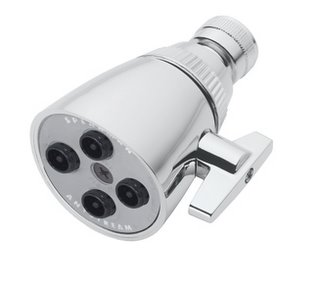 If you are motivated by money, know that saving water saves energy and that saves money. If you need some ideas on how to save water, check out this info from the Union of Concerned Scientists website.
If you are motivated by money, know that saving water saves energy and that saves money. If you need some ideas on how to save water, check out this info from the Union of Concerned Scientists website.CUT DOWN ON WASTE
*Don't use your toilet as a wastepaper basket. Throw tissues in the garbage.
*Don't run water unnecessarily. Turn water off while shaving, brushing teeth and scrubbing dishes.
*Keep drinking water in the refrigerator, rather than letting the tap run till the water gets cool.
*Instead of using water to thaw frozen food, defrost it in the refrigerator overnight.
*Scrape dishes, instead of rinsing them, before loading the dishwasher.
*Take showers instead of baths, and make them short. When you do take a bath, close the drain first, then turn on the water. Don't fill the tub more than halfway.
*Use your machines efficiently.
*Wait for a full load to run the dishwasher.
*Use the shortest wash cycle your dishwasher allows, unless dishes are very dirty.
*Select the appropriate water level or load size on your washing machine.
*Use a broom or rake instead of a hose to clear debris from driveways and other paved areas outside.
REDUCE LOSS THROUGH EVAPORATION
*Water your lawn and plants in the early morning or late evening when the temperature is lower.
*Put a layer of organic mulch around your plants.
*Keep a pool cover on the pool when it's not in use.
RECYCLE
*Put a small basin in your sink to collect water. Reuse the water for plants and cleaning.
*Take your car to a commercial car wash that recycles water.
IMPROVE YOUR EQUIPMENT
*Replace conventional toilets with ultra-low flow toilets, and save an average of 4 gallons per flush. Alternatively, put plastic containers filled with water in your toilet tanks. This saves less, but still helps. (Just keep the containers away from the flush mechanism.)
*Install low-flow aerators and showerheads to save 2-3 gallons on average per minute.
*Get a horizontal-axis washing machine. They're more expensive, but they reduce water usage by about 50%. Contrary to popular belief, top-loading models are available.
*Control water flow in hoses with automatic shut-off nozzles.
*Repair all leaks, which can cost tens of thousands of gallons a year. A leaky toilet alone can waste 200 gallons per day—and the leak is often invisible. To see if you have one, add food coloring to the tank water. You know there's a leak if colored water appears in the bowl.
No comments:
Post a Comment